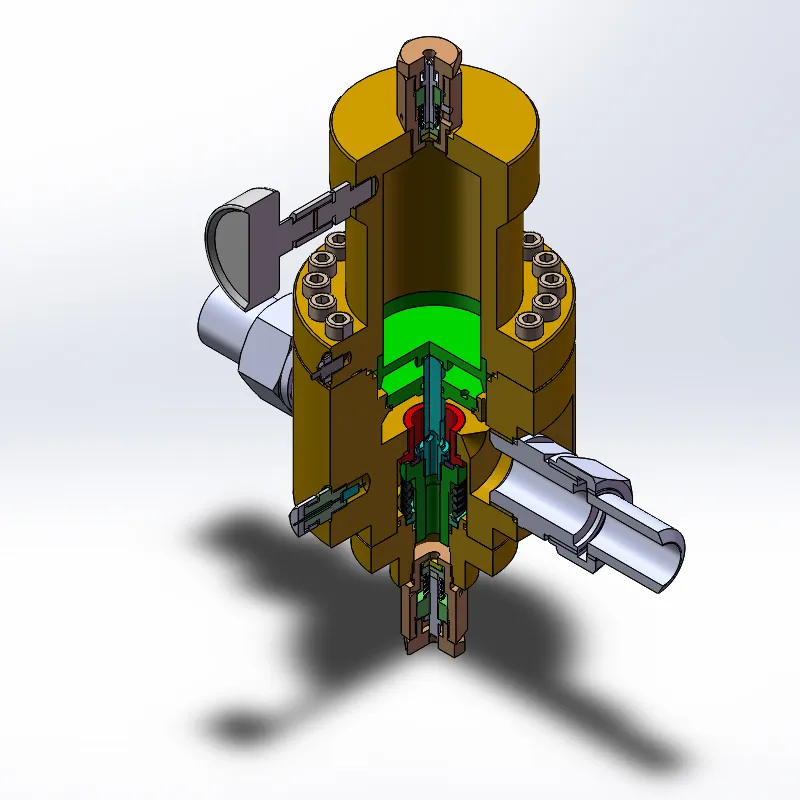
Nov . 17, 2024 11:53
Back to list
صمام تنظيم ضغط الغاز
Gas Pressure Regulator Ensuring Safe and Efficient Gas Supply
A gas pressure regulator is a critical component in gas systems, playing an essential role in maintaining safe and efficient gas supply across various applications, from residential systems to industrial operations. This device is designed to control the pressure of gas, ensuring that it remains at a consistent and safe level for users, regardless of fluctuations in supply pressure.
The primary function of a gas pressure regulator is to reduce the high pressure of the incoming gas to a lower, usable pressure. This is vital because most appliances and equipment require a specific pressure range to operate optimally. Without regulation, variations in pressure can lead to operational inefficiencies, equipment damage, and potential safety hazards. The regulator ensures that gas flows smoothly while preventing dangerous surges or drops in pressure.
How Gas Pressure Regulators Work
Gas pressure regulators operate on a principle of pressure difference. The device typically comprises a diaphragm, spring, and valve mechanism. The diaphragm reacts to changes in pressure; when the downstream pressure (the pressure after the regulator) deviates from the desired set point, the diaphragm moves, adjusting the valve accordingly. This movement either opens or closes the valve to allow more or less gas to pass through, thus maintaining a consistent downstream pressure.
One of the most common types of gas pressure regulators is the spring-loaded diaphragm regulator. In this design, the spring sets a specific pressure limit. As the pressure downstream approaches this limit, the diaphragm will push against the spring, closing the valve to reduce gas flow. Conversely, if the pressure drops below the preset level, the spring will allow more gas to flow through, increasing the pressure back to the desired level.
The Importance of Gas Pressure Regulation
.
Moreover, regulators are vital for safety. Gas, when not properly regulated, poses a risk of leaks and explosions. By ensuring that gas is delivered at a consistent pressure, regulators help mitigate these risks, protecting both people and property. Many modern regulators come equipped with safety features, such as overpressure shutoff mechanisms and relief valves, providing additional layers of protection.
صمام تنظيم ضغط الغاز

Types of Gas Pressure Regulators
Different types of gas pressure regulators are designed for specific applications. Some common types include
1. First Stage Regulators Typically used in larger applications, these regulators reduce high inlet pressure to an intermediate level.
2. Second Stage Regulators These further reduce the intermediate pressure to the final pressure required by the end-use application.
3. Single Stage Regulators Suitable for lower pressure applications, these regulators provide a straightforward solution, reducing pressure in one step.
4. Two-Stage Regulators Offering more precise control, these regulators reduce pressure in two stages, minimizing fluctuations in downstream pressure.
Conclusion
In summary, gas pressure regulators are indispensable components in the control of gas supply systems. They play a crucial role in ensuring that gas operates safely and efficiently, protecting both equipment and users. As the demand for natural gas increases globally, the importance of reliable and effective gas pressure regulation will only continue to grow. Whether in residential, commercial, or industrial settings, investing in high-quality gas pressure regulators is essential for any entity that relies on gas for operational efficiency and safety.
Next:
Latest news
-
Safety Valve Spring-Loaded Design Overpressure ProtectionNewsJul.25,2025
-
Precision Voltage Regulator AC5 Accuracy Grade PerformanceNewsJul.25,2025
-
Natural Gas Pressure Regulating Skid Industrial Pipeline ApplicationsNewsJul.25,2025
-
Natural Gas Filter Stainless Steel Mesh Element DesignNewsJul.25,2025
-
Gas Pressure Regulator Valve Direct-Acting Spring-Loaded DesignNewsJul.25,2025
-
Decompression Equipment Multi-Stage Heat Exchange System DesignNewsJul.25,2025

